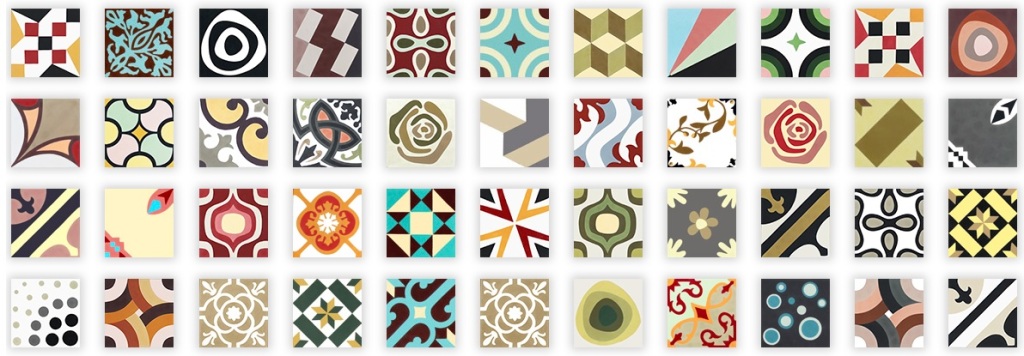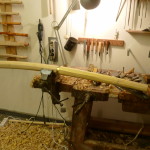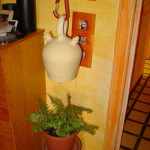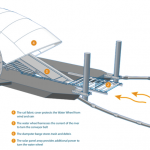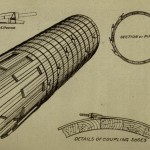Hydraulic mosaic is a decorative floor tile with carpet style patterns, made from pigmented cement. Invented halfway the nineteenth century in France, it was used mainly around the Mediterranean, in the Middle East, and in Central and South America. Hydraulic tile was a transition material between the pre-industrial and the industrial era, between craft processing and mass production.
Although their use diminished greatly since the 1960s — due to the arrival of cheaper mass-produced “terrazzo” tiles — hydraulic tiles are still made in the traditional way, both for the restauration of old buildings and to put them in new buildings.
Illustration: Mosaic Del Sur.
The manufacturing process is characterized by the use of a variety of metal moldes to apply colours, which are then fixed in the cement with the use of an hydraulic press. No heat treatment is involved. The craftsman prepares a paste with water, marble dust, white cement, sand and pigments. Over this comes another two layers of cement and sand, and then everything is pressed together. Because the colours are set in the cement until a depth of 4 to 5 mm, the decoration of the tiles does not fade with the years.
However, there were some drawbacks. The manufacturing of complicated designs is time-consuming and thus expensive. Furthermore, hydraulic tiles require storage for up to 6 months in order to complete the cement drying and hydration process. Once installed, the flooring cannot be walked upon for several days, and it requires regular maintenance to keep it in optimal state. Hydraulic tiles also have low resistance to stains and aggressions of a chemical nature.
It’s not entirely clear why the tiles are called “hydraulic”. According to some, it refers to the use of the hydraulic press, but according to others it refers to the phenomenon of cement hydration. Both could be right: the pressing was originally done with fly and screw presses, while the mechanism of cement hydration was not very well known at the time.
The manufacturing process of hydraulic tiles is shown in the two videos below. An illustrated article, written in English and detailing the manufacturing of hydraulic tile, (PDF) can be found at the Instituto de Promoción Cerámica. Thanks to Adriana Parra.
More tiles and masonry articles:
